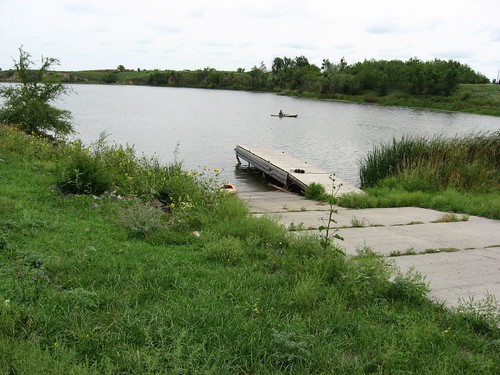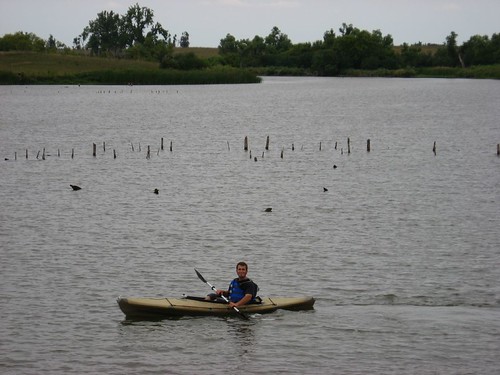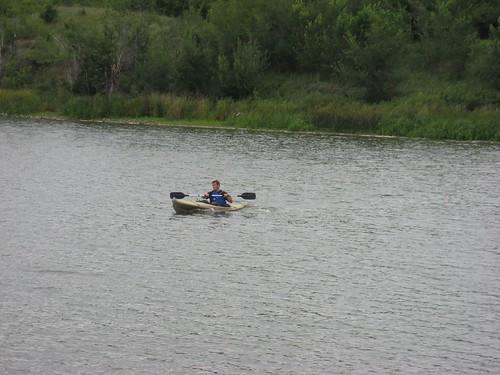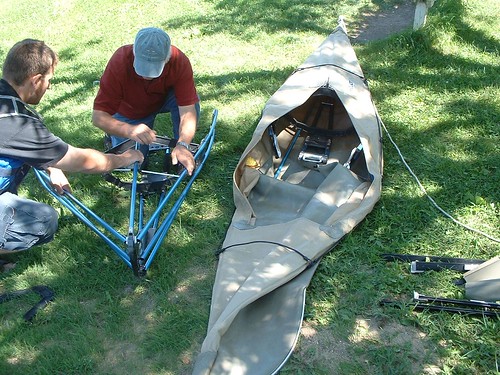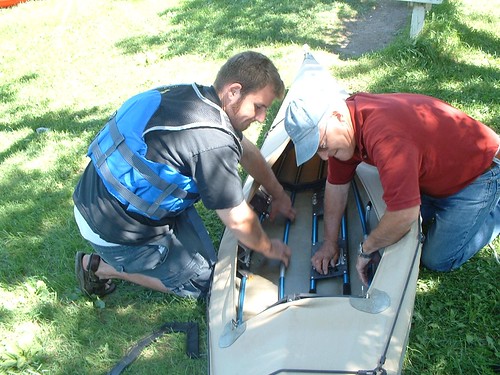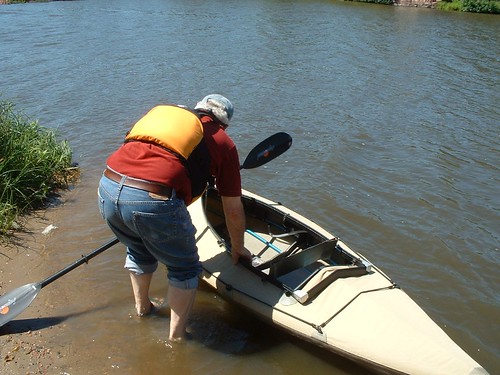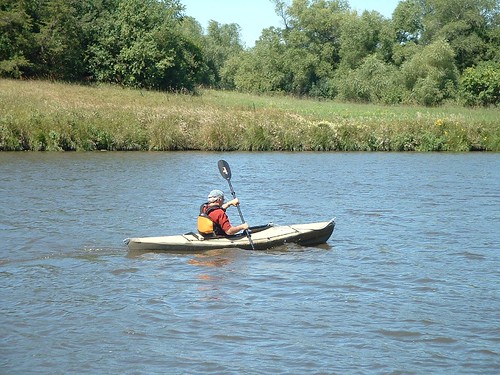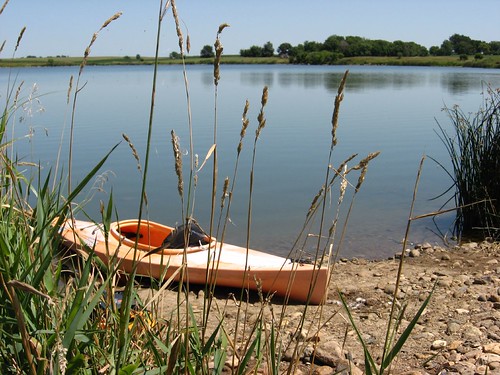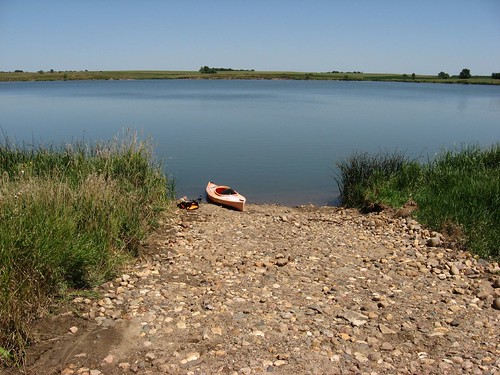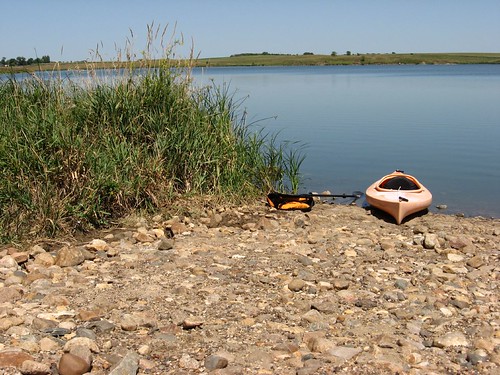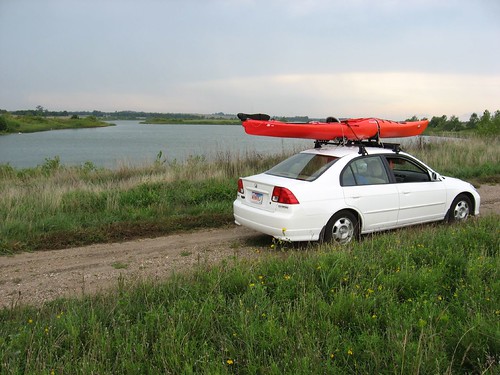
Like so many of the more underutilized waterways, finding the lake and an access point is an adventure in itself. Long Lake is located just south of Lake Madison, separated by a narrow isthmus from that more well-known body of water. From Sioux Falls, an easy route is north on Cliff Avenue to North 60th Street, then left to State Highway 38. At Hartford, you would turn north on 464th Avenue, through Colton, and on to County Road 52, just at the edge of Chester. After a couple of miles, you turn north on 461st Avenue. until reaching County Road 44 running between Lake Madison and Long Lake. Along CR 44, heading west, you would look for the intersection of Lenola Heights and 237th. The sign for Lenola Heights is on the north side of the road, and you should start looking for it after passing the “Hillside Resort.” Directly across from that sign is a rough dirt road heading down to the north shore of Long Lake. You can see the lake off to the left as you are moving down CR 44.
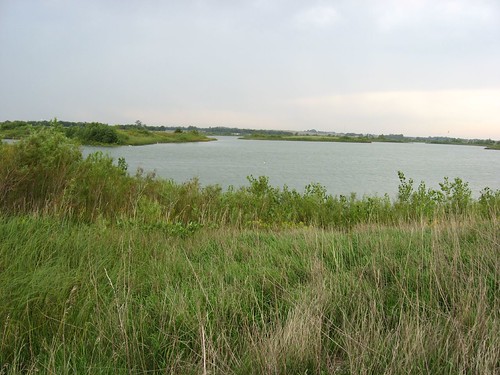
Only after proceeding down toward the lake on a slopping narrow dirt road is a small “lake access” sign visible. A large turnabout is provided at the end of this entry road with an eroded pathway to the water’s edge, about a 50 foot carry. There is no other public facility at this lake access point. A shelving bottom at the access point provides an easy launch for a canoe or kayak into the lake.
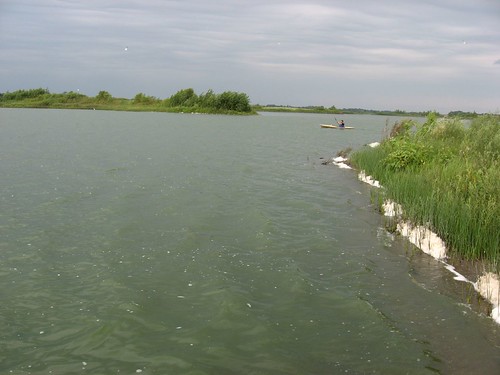
Long Lake, as its name implies, is a long narrow waterway with a number of islands in the middle portion of the lake. An immediate impression upon seeing the water for the first time is the large number of waterfowl present. We saw a lot of egrets throughout our paddle on the lake. They were in groups and solo: standing in the shallows, on the shore, and resting in trees; more egrets than I have ever seen in a single location. Also, there were a number of great blue heron seen about the lake. All around us were great flocks of gulls. While we did see cormorants, we did not observe any ducks, geese, or pelicans during our paddle. On the way back, however, we passed a spot on the south eastern shore called Pelican Point, and there we saw a few pelicans and hundreds of gulls. As we stood on the shore after returning from our paddle, across the lake we saw a deer wading from one of the islands to the mainland. Egrets were there in the path of the deer, but they remained in place as the deer moved across the shallow water.
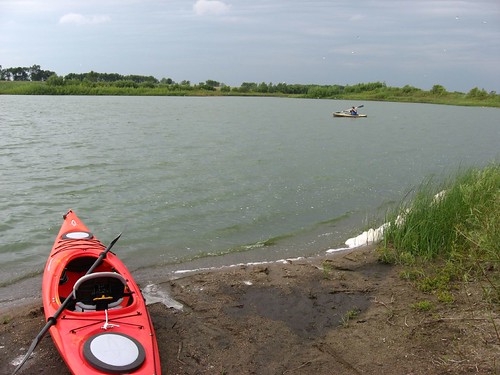
There was quite a wind blowing across the lake on this trip; it was overcast with dark clouds in the west and thunder booming in the distance. The wind was from the south, so there was a lee along the southern shore. The water conditions, therefore, ranged from a good chop in portions of the lake to a dead calm along the southern shore. I was using my 13 foot Dagger kayak with a rudder, and my son was in a 12 foot Folbot with no rudder. He experienced some tracking difficulty in the teeth of that wind. With a rudder, however, it was easy for me in the Dagger. Water was coming up on the bow and side decks, but there was no real problem for either of us – except for Derek’s need to paddle a lot on one side when experiencing a cross wind.
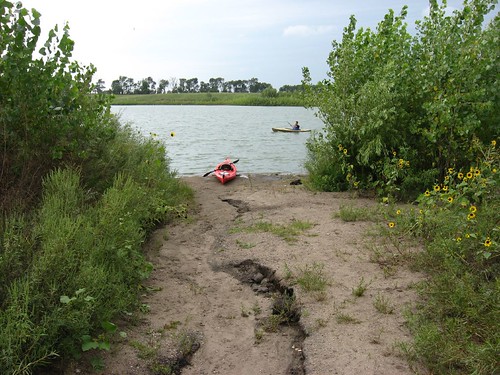
The south shore of Long Lake is characterized by low rolling hills and a lot of vegetation. We did not observe any noticeable cliffs along the shore line. At some points of the lake an isolated home has been built, but this is still a pretty deserted lake; we saw no other boats on the water. The lake is posted “no wake” which pretty well eliminates fast motor boats or jet skies. I would imagine that people who want to zoom around the lake in a motorboat simply use Lake Madison or the other larger lakes in this region.
My son, Derek, told me that Long Lake was, so far, his favorite waterway in the area. He loved being in the waves out in the wind with waterfowl flying all around him. We were surrounded by sound on this cruise: the wind in the trees, the calls of the birds, the waves on the shore. This is really a wonderful lake for a two hour cruise, just slowly meandering among the islands and observing the multitude of birds.

